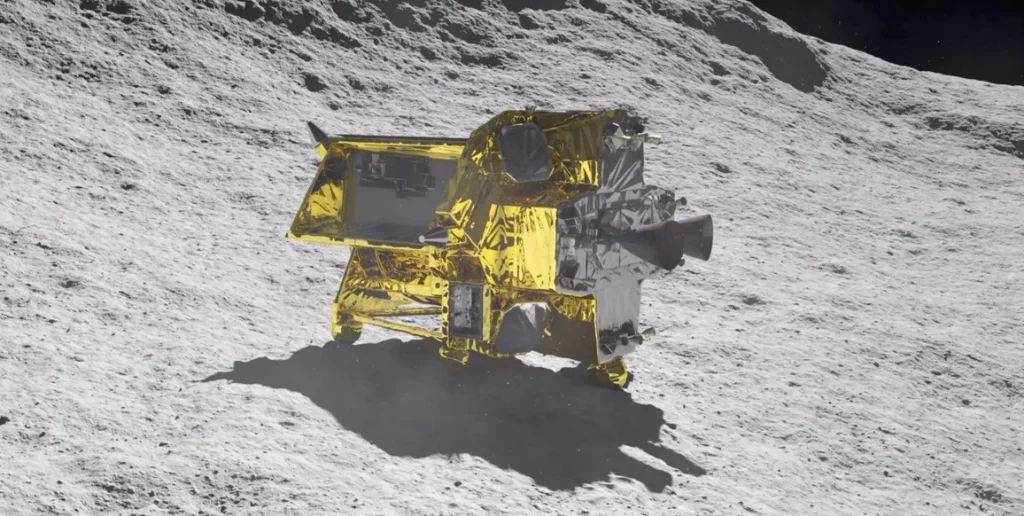Japanese Moon lander has sent back its first images of the lunar surface, showing a gray, rubble-covered world in incredible detail.
Solar-powered robots–Lunar Excursion Vehicle aboard Smart Lander for Investigating Moon reported telemetry data to help scientists access information from the lunar surface.
According to reports, the Japanese space agency launched two space missions– the Smart Lander for Investigating Moon (SLIM) mission aimed at accomplishing a precise landing on the lunar surface and the XRISM X-ray satellite.

The Japan Aerospace Exploration Agency (JAXA), the University of Aizu, and Ritsumeikan University recently released the first few images from the lander.
The Lunar Excursion Vehicle (LEV-1) onboard SLIM is a small robot that received telemetry data and paved the way for scientists to access information post-deployment.
The image was devised by synthesizing 257 low-resolution monochrome pictures. However, scanning operations were discontinued, as represented in the photo with the mosaic pattern.

Post the lunar landing, the Multi-Band Camera (MBC) released the locking mechanism before the spacecraft power shutdown, conducting scans using an adjustable mirror. This preliminary examination aims to assess rocks of scientific interest near the SLIM landing site.
JAXA stated, “The scanning is performed by moving the adjustable mirror and is for preliminary examination of the rocks of scientific interest situated around the SLIM landing site’

The fifth country in the world to successfully land space land on the lunar surface and its first moon landing mission, Japan’s team aimed to examine lunar rocks, label them, and prepare for high-resolution spectroscopic observations. The space agency also noted that the goal is likely to gather scientific data and information for research purposes.
The confirmation from JAXA regarding LEV-1’s successful activities on the lunar surface was reported on January 20, 2024.
The achievements of LEV-1, including leaping movements, inter-robot communication, and fully autonomous operations, designate pioneering advancements.

JAXA said that the knowledge and experience gained will be applied in upcoming missions and outreach efforts, such as transmitting UHF band radio waves, aiming to engage the public in lunar exploration.
The locking mechanism of SLIM was released to withstand the impact upon launch and landing. At the same time, the device conducted scanning operations using an adjustable mirror for a preliminary examination of rocks of scientific interest around the SLIM landing site.
This led to the creation of landscape images by synthesizing 257 low-resolution monochrome pictures. The team sorted out rocks, assigned nicknames based on the landscape image, and equipped for 10-band high-resolution spectroscopic observations.

LEV-1 executed planned leaping movements and direct communication with ground stations, including inter-robot test radio wave data transmission from LEV-2. The robots are powered by solar arrays, and efforts are being made to continue receiving signals from LEV-1.
Japan’s Moon lander is counting on its solar equipment to power the lander. However, concerns regarding batteries were faced soon after landing.
The good news is that SLIM’s two payloads, LEV-1 and LEV-2 were both deployed and were roving around the Moon before SLIM shut down. LEV-2 is a shape-shifting rover that was partially developed by the toy company behind the Transformers
(ref-interestingengineering)
